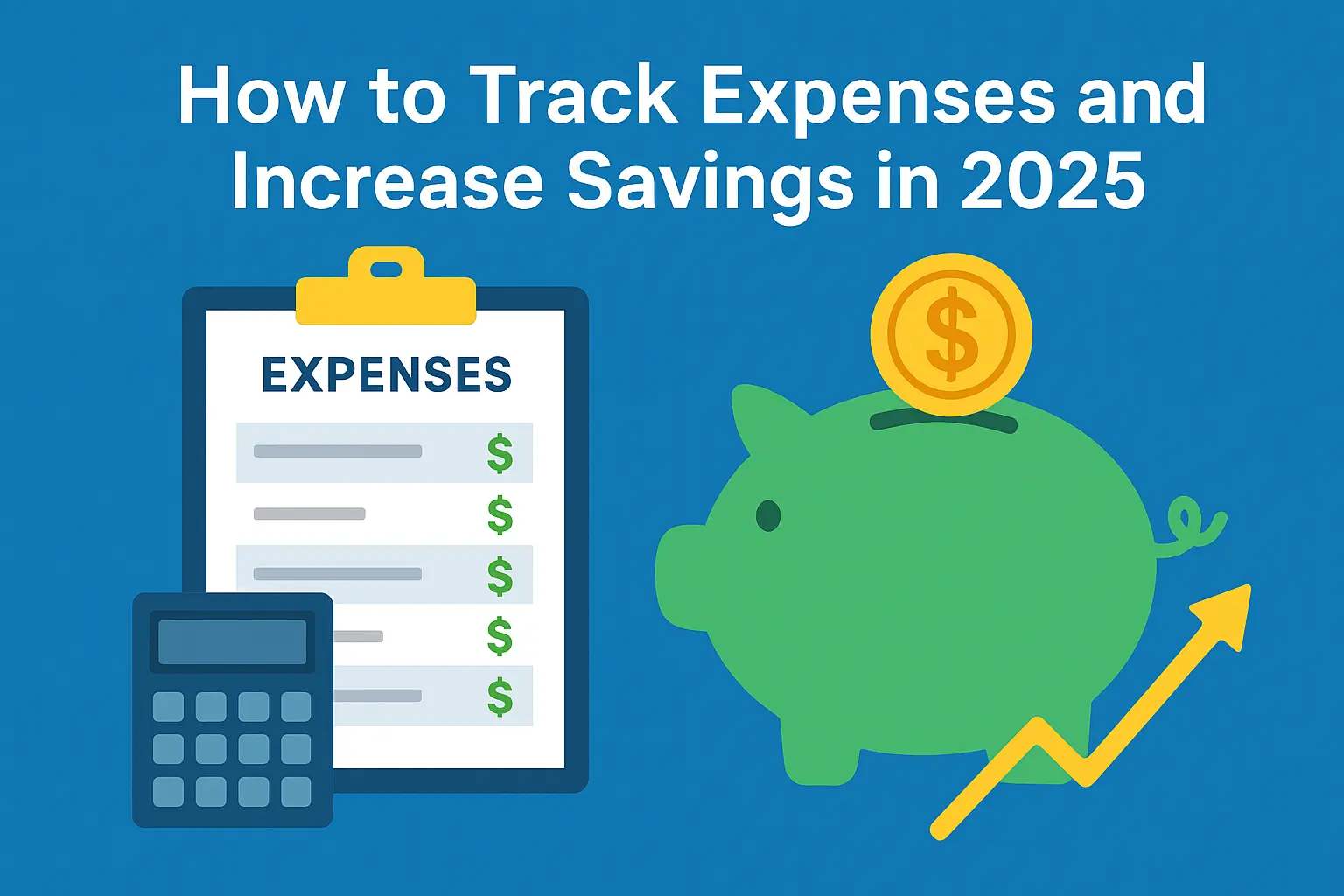In today’s fast-paced world, managing finances is more critical than ever. Whether your goal is financial independence, saving for a major purchase, or reducing financial stress, tracking expenses and increasing savings are essential skills. This guide provides a step-by-step approach to help you take full control of your finances in 2025.
Why Tracking Expenses is Crucial for Financial Health
Many people underestimate their daily spending. Without accurate tracking, even a decent income can feel insufficient at the end of the month. Monitoring your expenses is important because:
- Visibility: You cannot control what you do not track. Knowing exactly where your money goes is the first step toward financial control.
- Identify Waste: Regular tracking exposes unnecessary spending habits, such as unused subscriptions or impulse purchases.
- Budgeting Accuracy: When your expenses are clear, budgeting becomes precise and realistic.
- Stress Reduction: Financial uncertainty causes stress; knowing your expenses and savings goals provides peace of mind.
Step 1: Choose Your Tracking Method
Tracking expenses has never been easier thanks to technology. Options include:
1.1 Pen-and-Paper Tracking
The traditional method involves recording every expense in a notebook or planner.
Pros:
- Simple and distraction-free
- Encourages conscious spending
Cons:
- Time-consuming
- Difficult to analyze trends without transferring data
1.2 Spreadsheet Tracking
Programs like Excel or Google Sheets help categorize, sort, and analyze spending.
Pros:
- Customizable categories
- Calculates totals and trends automatically
- Can generate visual graphs
Cons:
- Requires consistent updates
1.3 Expense Tracking Apps
Modern apps automate expense tracking by linking to bank accounts and credit cards.
Pros:
- Saves time through automation
- Visual dashboards provide quick insights
- Alerts help prevent overspending
Cons:
- Privacy concerns with financial data
- Some apps require subscriptions
Step 2: Categorize Your Spending
To track expenses effectively, categorize each transaction. Common categories include:
- Housing (rent/mortgage, utilities)
- Transportation (fuel, public transit, maintenance)
- Food (groceries, dining out)
- Entertainment (movies, games, subscriptions)
- Health & Fitness (gym, medical, wellness)
- Savings & Investments
- Miscellaneous
Categorization allows you to analyze spending patterns and identify areas for improvement.
Step 3: Set Realistic Budgets
With clear tracking, setting limits becomes practical. One widely used approach is the 50/30/20 rule:
- 50% Essentials: Housing, groceries, utilities
- 30% Wants: Dining out, hobbies, entertainment
- 20% Savings: Emergency fund, investments, retirement
Budgets should be adjusted according to income and lifestyle.
Step 4: Reduce Unnecessary Expenses
Tracking expenses helps identify areas to cut back. Effective strategies include:
- Cancel unused subscriptions
- Implement a 24-hour rule before purchases
- Prepare meals at home instead of dining out
- Optimize transportation methods
- Compare prices before major purchases
Step 5: Automate Your Savings
Automation ensures savings are consistent:
- Automatic Transfers: Schedule monthly transfers to a high-yield savings account
- Round-Up Savings: Use apps that round up transactions and save the difference
- Retirement Contributions: Maximize contributions to employer-sponsored plans or personal retirement accounts
Step 6: Track Progress Regularly
Tracking is an ongoing process. Monthly reviews are essential:
- Compare actual spending to budgets
- Analyze trends in discretionary spending
- Adjust budgets or savings goals as needed
- Monitor savings growth to maintain motivation
Step 7: Use Advanced Tools for Deeper Insights
Advanced financial tools help optimize finances further:
- Budgeting Software: Apps like YNAB or Mint provide detailed planning and analysis
- Cash Flow Analysis: Track income versus expenses to understand surplus funds
- Investment Tracking: Monitor investment portfolios to ensure optimal growth
Step 8: Cultivate Mindful Spending Habits
Mindful spending helps maintain control over finances:
- Evaluate the necessity of each purchase
- Prioritize experiences over material items
- Avoid lifestyle inflation when income rises
Step 9: Build an Emergency Fund
A robust emergency fund is essential for financial stability. Ideally, it should cover 3–6 months of essential expenses, ensuring:
- Preparedness for unexpected events like medical emergencies or urgent repairs
- Reduced financial stress
- Avoidance of high-interest debt
Step 10: Leverage Financial Education
Knowledge is a powerful tool in increasing savings:
- Follow reputable personal finance blogs, podcasts, and books
- Enroll in online courses on budgeting, investing, and taxation
- Participate in forums where people share practical financial advice
Step 11: Set SMART Financial Goals
SMART goals (Specific, Measurable, Achievable, Relevant, Time-bound) provide clear direction:
- Specific: Define exact targets (e.g., save $5,000 for an emergency fund)
- Measurable: Track progress periodically
- Achievable: Ensure goals align with income and spending habits
- Relevant: Align goals with long-term financial plans
- Time-bound: Set deadlines for achievement
Step 12: Avoid Common Mistakes
Common pitfalls include:
- Skipping expense tracking
- Ignoring small recurring expenses
- Failing to adjust budgets after income changes
- Emotional spending without reflection
Awareness of these mistakes can prevent setbacks in saving goals.
Take Control of Your Finances in 2025
Tracking expenses and increasing savings is not just about numbers—it’s about establishing strong habits, gaining awareness, and building financial security. By following this guide—choosing an appropriate tracking method, categorizing spending, automating savings, and cultivating mindful habits—you can effectively manage your finances and achieve significant savings in 2025.
Consistency is key. Small, daily financial actions compound over time, turning moderate savings into financial stability. Begin today, track carefully, and create a more confident financial future.
